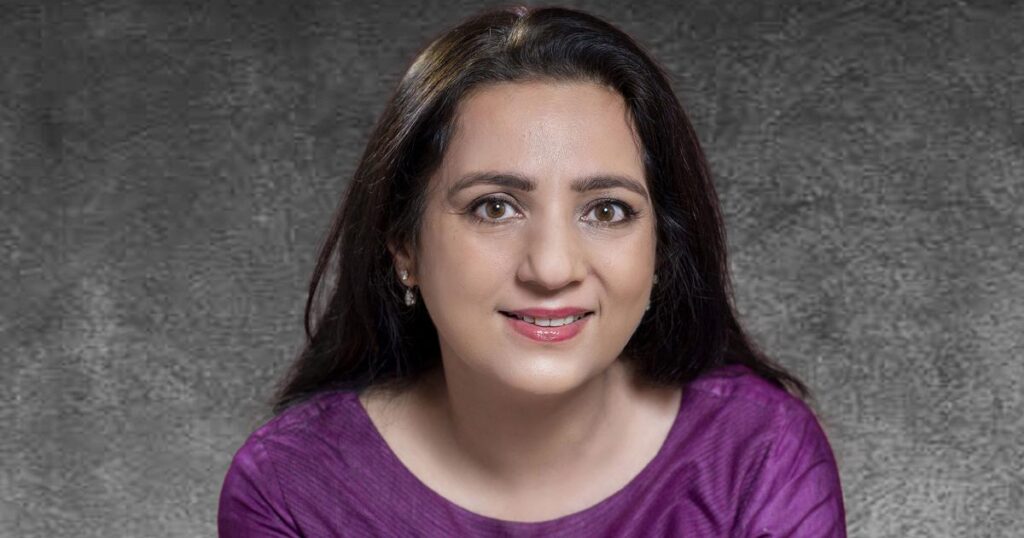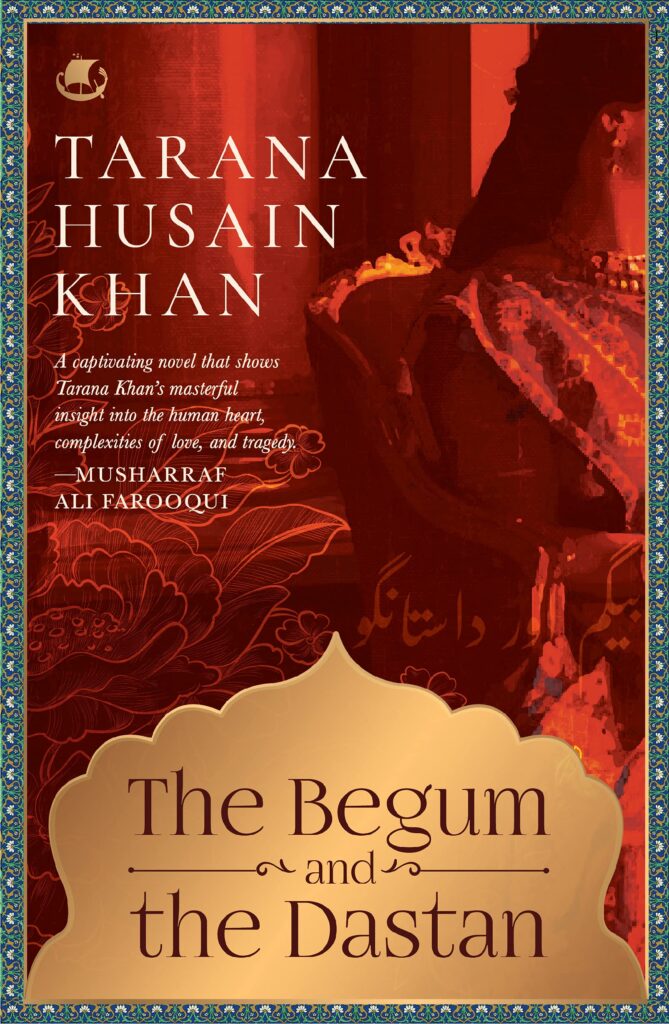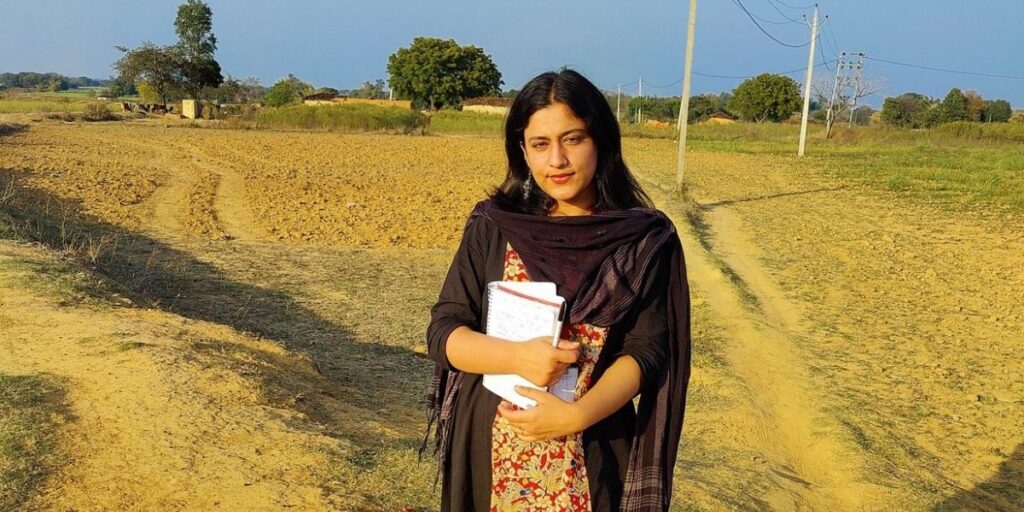Rampur, UTTAR PRADESH :
Tarana Husain Khan doesn’t write women only as damsels in distress, she writes them as women who challenge.

I don’t remember when my mother first told me, “Boys will be boys.” as an explanation. But I trusted it. The 20-year-old I am now knows it’s an eraser. A cleaning towel that wipes away the grim men produce. Over our words. Over our careers. Over our bodies. It’s an explanation that deletes a lived history with a swift and casual swipe. Tarana Husain Khan’s The Begum and the Dastan resists this erasure.
Khan’s character, Ameera’s grandmother, whom she calls Dadi, tells her the dastan about Feroza Begum, Ameera’s great-grandmother. Feroza Begum attended sawani celebrations at Nawab Shams Ali Khan’s Benazir Palace, defying her family, only to be kidnapped by the Nawab. Although the premise sounds simple, Khan crafts the dastan carefully, preserving the dynamics in Sherpur, a princely state, like one would sour pickle in a jar. Her writing serves as a citation for the overused “Show, don’t tell” technique, arranging the elements of time, location and character through a nuanced understanding of history.
She weaves together the stories of three women, Lalarukh, Feroza and Ameera, with the help of three dastangos, about Kallan Mirza, Ameera’s Dadi, and herself. Each story, within another story, surrenders as a cautionary tale. Sometimes, as a spoiler, that hands you the reins to ride through the rest of the story.
Blame slithers across each story, hissing at every woman who defies and exercises her need for independence. During the forced marriage to the Nawab, women around the bride were “tut-tutting over Feroza’s heartlessness”, believing she aborted her pregnancy from her previous marriage. The blame congeals on Feroza, a victim of forced abortion by the Nawab. In the rumours, the Nawab is a man she loves, not her abuser. The cruelty of these women steps outside the realm of gossip, nipping at Feroza’s right to refuse consent to her nikah.
“‘Feroza Begum, daughter of Altaf Khan urf Miya Jan Khan, your wedding has been arranged to Nawab Shams Ali Khan Bahadur, son of Nawab Murad Ali Khan Bahadur for a sum of two lakh rupees as meher. Do you agree?’
What if she just didn’t say anything?
‘She says “yes”!’ A middle-aged woman dressed in her bridal dress, suddenly shouted towards the curtains. Feroza turned towards the woman. The old lady in charge of her elbowed her ribs.
‘Uh?’ she turned sharply towards the offending lady.
‘I heard it too. She said “yes”!’ said the old lady, then another woman joined in bearing witness to her acquiesce and then another.”
“Why wouldn’t a divorced woman who aborted her child marry the Nawab?” is the rhetoric that these women echo. It’s a form of enabling, but Khan exerts dialogue, channelling prose to amplify Feroza’s reaction, forgotten amidst placeholder approval. She choreographs the myth “she asked for it” by excluding the chorus of the maulvi asking for consent thrice, as is tradition, to exacerbate the rumours that enable, and more terrifyingly, erase. Another dialogue chimes in to note this eager “consent” by Feroza. In these instances, Khan’s narrator, Dadi, is not just a storyteller; but an advocate for forgotten history.
But Khan doesn’t write women only as damsels in distress; she writes them as women who challenge. Feroza wears what she wants, despite the word that the patriarchy will impose on her: nautch. Khan examines how the question of her attire serves as a justification for the harassment. When Bibi, Feroza’s maid, asks her to “let it be”, as she was “wearing that dress”, Feroza doesn’t surrender to the blame. Instead, Feroza asks these questions: what if she was one of the common women? What if she was a nautch?
Khan tackles clothing not only as a form of rebellion but as an identifier of communion and the dismissal of “the other”. When Feroza sights a British woman wearing a “strange gown”, she argues that she should’ve worn “our dress” because she’s in “our country”. Other times, this divide is a form of empowerment.
“Strangely, guys don’t pester scarf-wearing girls with ‘I want to be your friend’ proposals. So us scarfed girls choose to talk to guys we like and make boyfriends on our own. It’s pretty cool that way, though I long to throw away the scarf and open up my hair like I used to at St Mary’s.”
Ameera’s perception of the scarf rewrites the reputation of the vilified veil, untying the folds that make it an oppressive tool while recognising how being “the other” means a kind of protection. A woman’s scarf, her dress, and her jewellery make an argument in this novel. But the expectations that pin a scarf around Ameera’s head, and a nath on Feroza’s nose, encourage a misplaced trust in the men in their lives.
Across the three stories in the novel, protagonists expect men to protect, not because they victimise themselves, but because that’s what’s taught to women: dependence is a desired trait. Khan acknowledges how patriarchy dribbles on the men, drawing out how Lalarukh, Feroza and Ameera feel betrayed by the men in their lives for not protecting them. The cadence of this betrayal morphs across the stories as Khan manipulates language like a glassblower does glass.
“I do believe that in this day and age nobody should bully you into selling your property – these are not the Nawab’s times; but if it was Jugnu’s fees and his exams, Abba would sell off the shops and chuck the case in a heartbeat. We females always depend on our fathers or males to rescue us – our default response to a crisis. Imagine, poor Feroza Begum’s father dumped her in the harem and ran away!”
Khan wields the tone of each story, carefully grafting the premise of a woman wronged in different periods and spaces. She uses the first-person perspective to narrate Ameera’s life, crumbling with her family’s negligence towards her, using a voice akin to a teenager simmering with anger. But for Lalarukh and Feroza, Khan, or rather Dadi and Kallan Mirza, uses the third-person perspective, a voice that is omniscient and viscous, dripping of superiority.
They narrate the violence of Nawab and Tareef Khan, Lalarukh’s kidnapper, without embellishments. The abusers are not kings or sorcerers in the chapters that harrow. They are written as, to no surprise, violators. Khan’s treatment of the dynamic between the Nawab and Feroza contradicts this claim sporadically. But when Feroza reciprocates the Nawab’s ‘love’ for her, he continues to dredge her in the limitations of his harem, remaining free himself, further testifying the degree of his abuse. Feroza is a flawed character, but she is not a flawed victim, and Khan asserts that.
Like Khan, both Dadi and Kallan Mirza are biased narrators, intervening to train their listener(s) to root for the protagonist. They collectively fuel a question: How does tradition, along with law, permit the violation of women? Unfortunately, the stories, or rather the lived experiences that ask this question, are muzzled. But the dastangos, both the real and the fictitious, bite through the labour that accompanies such storytelling. The story prompts the question: How can one write history without condoning it? In The Begum and the Dastan, history is an inspiration, a tool, and an anchor, but it is not a justification.

source: http://www.scroll.in / Scroll.in / Home> Book Review / by Isa Ayidh / (book cover image edited in, amazon.in) /June 27th, 2021









